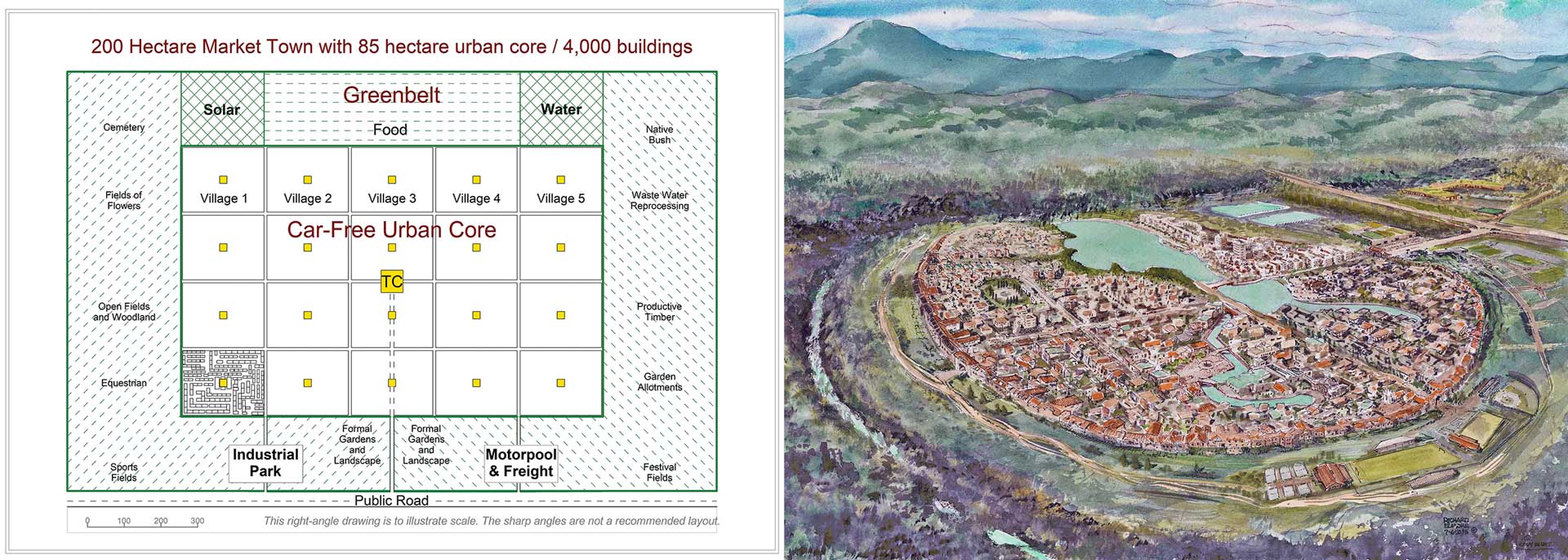What is a Market Town?

A development model whose time has returned
Those who fail to learn from history are condemned to repeat it.
George Santayana 1905
A thousand years ago, the Crown began to issue charters to select towns to create a local economy.
Called Market Towns, their foundation was economic. They thrived until the Industrial Revolution that gave rise to the gritty, polluting cities where people became fodder for factories. After World War Two a new, radical experiment began called the suburb. It was based on motor vehicles and seemingly-unlimited petroleum, in which people became consumers. There was an aura of newness and modernity. No decision-makers or key-influencers examined potential adverse side effects which now are spawning so many global catastrophes and crises that politics now seems to be fighting fires, not planning for a sustainable, civilised and better future.
A Market Town is a timeless development model that suits a post-suburban world. Whereas Version 1 was based on regional agriculture, Version 2 is based on digital technology that eliminates the tyranny of distance. The economy is based on 20% of the jobs selling Local to Global (L2G) that brings in cash that is then circulated in Local to Local (L2L) businesses that enable the town to maintain a positive balance of trade on a sustainable basis.
The economic critical mass determines the town’s size: About 10,000 people living in a medium-density (typically 3-floor attached housing) town with about an 85 hectare urban core, surrounded by a 115 hectare greenbelt to prevent cross-boundary conflicts and provide a direct experience of real-nature.
The urban core is made up of a cosmopolitan town centre surrounded by about 20 side-by-side villages of about 200 buildings each where each village has its own character defined by its founding citizens. Most notably, the urban core is car-free. All day-to-day destinations are within walking distance, and the local jobs mean no outbound commuters. Cars are kept in the greenbelt motorpool. A Market Town does not take away people’s cars, it eliminates the necessity to drive.
The usual economic burden on the host council is eliminated. No upgrade to access roads. No supplying external water and wastewater pipes. As an open town, it provides new amenities for the surrounding region, not burdening the existing ones as it adds new sports fields, libraries, schools, festival fields, parks, meeting rooms, theatres as well as locally-owned commercial activities.
The Market Town plans for seven generations. It presumes a more hostile world with climate change, pandemics and economic uncertainty, where its intent to to adapt so its citizens can live a good life regardless of what comes.